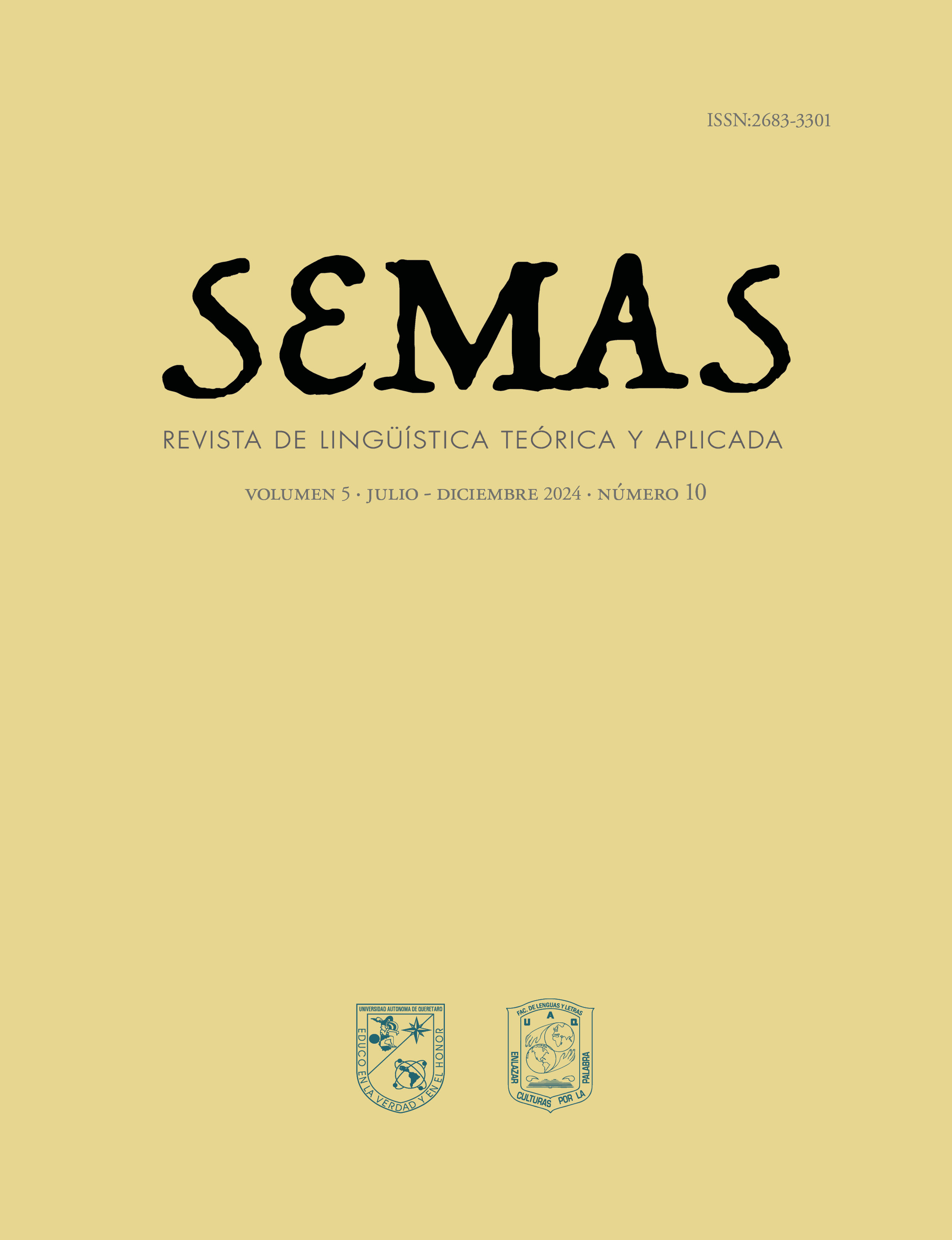Resumen
Identifying Spanish foreign language learners’ preferences and perceptions concerning written corrective feedback is crucial to empower them as writers. Studies on perceptions display incongruity between teachers’ praxis and the learners’ views; a mismatch that compromises the revision process and the overall growth of writing as a skill. Therefore, this study offers a fresh panorama on the matter by surveying the opinions and predilections concerning written corrective feedback of 21 intermediate Spanish foreign language learners. This study also provides a detailed profile of the participants as writers based on their self-reported practices (i.e., writing strategies) and their experiences with any formal instruction on literacy. Overall, an increase in positive perspective regarding written corrective feedback was observed as learners considered it furthered their writing abilities. They mainly favored indirect comments that a) created saliency and b) reflected metalinguistic information. Pedagogical insights to advance Spanish learners’ writing aptitudes are offered.
Referencias
Corbin, J., y Strauss, A. (2007). Basics of Qualitative Research: Techniques and Procedures for Developing Grounded Theory. Thousand Oaks, California: Sage.
De Silva, R. (2015). “Writing strategy instruction: Its impact on writing in a second language for academic purposes”. Language Teaching Research, 19(3), pp. 301-323. https://doi.org/10.1177/1362168814541738
Elola, I., Rodríguez-García, V. y Winfrey, K. (2008). “Dictionary use and vocabulary choices in L2 writing”. ELIA: Estudios De Lingüística Inglesa Aplicada, 8, pp. 63-89.
Ferris, D. (1995). “Student Reactions to Teacher Response in Multiple-Draft Composition Classrooms”. TESOL Quarterly, 29(2), pp. 33-53. https://doi.org/10.2307/3587804
Ferris, D. y Roberts, B. (2001). “Error feedback in L2 writing classes. How explicit does it need to be?” Journal of Second Language Writing, 10(3), pp. 161-184.
Greenslade, T. A. y Félix-Brasdefer, J. C. (2006). “Error correction and learner perceptions in L2 Spanish writing”. In Selected Proceedings of the 7th Conference on the Acquisition of Spanish and Portuguese as First and Second Language (pp. 185-194).
Hedgcock, J. y Lefkowitz, N. (1994). “Feedback on feedback: Assessing learner receptivity to teacher response in L2 composing”. Journal of second language writing, 3(2), pp. 141-163.
Lasagabaster, D. y Sierra, J.M. (2005). “Error correction: Students’ versus teachers’ perceptions”. Language Awareness 14(2), pp. 112-127.
Leki, I. (1991). “The preferences of ESL students for error correction in college-level writing classes”. Foreign Language Annal, 24(3), pp. 203-218.
Manchón, R. M. (2011). “Writing to learn the language: Issues in theory and research”. En R. M. Manchón (Ed.), Learning-to-Write and Writing-to-Learn in an Additional Language, (pp. 61-82). Amsterdam: John Benjamins.
Merriam, S. B. (2009). Qualitative Research: A Guide to Design and Implementation. San Francisco: John Wiley and Sons.
Mikulski, A. M., Elola, I., Padial, A. y Berry, G. M. (2019). “Written feedback in heritage Spanish classrooms: A national survey of students and instructors”. Revista Española de Lingüística Aplicada/Spanish Journal of Applied Linguistics, 32(2), pp. 543-572.
Plonsky, L. & Mills, S. V. (2006). “An exploratory study of differing perceptions of error correction between a teacher and students: Bridging the gap”. Applied Language Learning, 16(1), pp. 55-74.
Richards, L. (2005) Handling Qualitative Data. London: Sage.
Storch, N (2013). Collaborative Writing in L2 Classrooms: New Perspectives on Language and Education. Bristol: Multilingual Matters.
Valdés, G. (2001). “Heritage language students: Profiles and possibilities”. En J. K. Peyton, D. Ranard y S. McGinnis (Eds.), Heritage language in America preserving a natural source (pp. 37-77). McHenry, IL: The center of Applied Linguistics and Delta Systems.
Valentín-Rivera, L. (2019). “Comparing the self-perceptions and the efficacy of Spanish heritage language learners as authors: In search of an effective writing process”. Estudio de Lingüística Aplicada, 36(68), pp. 99-130.
Valentin-Rivera, L. (2023). “The Efficacy of Teachers’ Written Corrective Feedback in the L2 Chinese Classroom: Learner Perceptions and Preferences”. In L. Yang y L. Valentin-Rivera (Eds.), Developing Writing Competence in L2 Chinese Classrooms: Research and Application (pp. 134-151). Bristol, UK: Multilingual Matters.

Esta obra está bajo una licencia internacional Creative Commons Atribución 4.0.
Derechos de autor 2024 Semas


